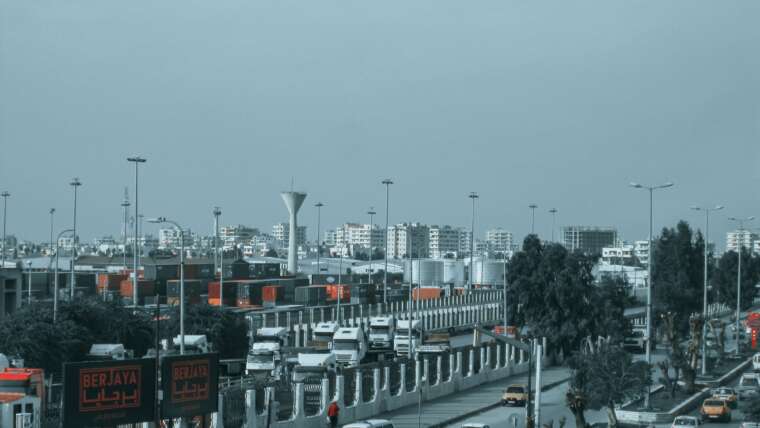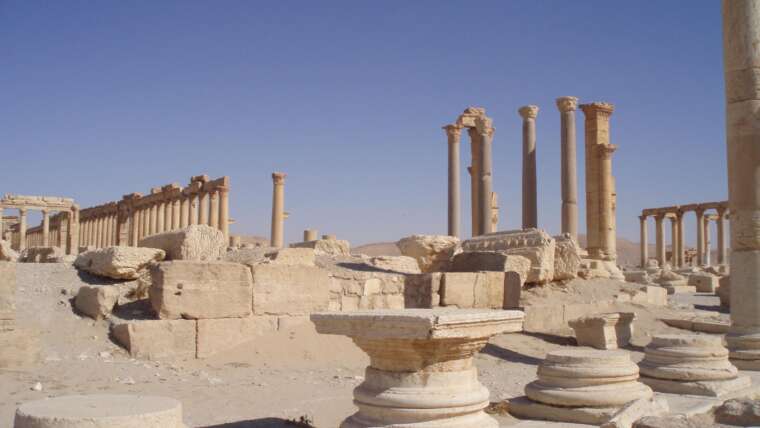Syria, officially the Syrian Arab Republic, is a country in Western Asia, bordering Lebanon to the southwest, the Mediterranean Sea to the west, Turkey to the north, Iraq to the east, Jordan to the south, and Israel to the southwest.
Day 01: Arrive Damascus, Syria
Arrive Damascus meet and assist and transfer to hotel.
Damascus, the capital of Syria, is one of the oldest inhabited cities in the world, dating back to 4000 B.C.
Day 02: Damascus, Syria
Your full day of sightseeing starts with the National Museum of Damascus, with its large collection of ancient Syrian and classical antiquities. Next visit the Christian quarter to see the underground St. Anannias Chapel and St. Paul’s Church, both situated behind Bab Keissan, one of the gates in the old wall encircling Damascus. See the infamous “Street Called Straight” where Judas once lived, and the Window of St. Paul, where he was lowered in a basket out of the window to avoid arrest.
After lunch, explore the Old City. See the Azem Palace; with a simple exterior that contrasts sharply with the beautiful interior, it is a wonderful example of an 18th century Damascene house. Visit Umayyad Mosque, built in 705 A.D. when Damascus was the capital of the Arab Islamic Empire, and the adjacent Tomb of Salah al-Din (Saladin’s Tomb), built in the 12th century with beautiful marble mosaics inside. Continue to the old covered souqs (markets) of Damascus, with their fragrant scents, spices, and exotic colorful merchandise. At sunset, drive up 1,150 feet to Quaison Mountain, for panoramic views of the city.
Day 03: Damascus To Lattakia, Syria
This morning drive to Crac des Chevaliers, the Castle of the Knights, a stately 12th century Crusader castle, and one of the most famous medieval citadels in the world. After lunch drive to the Mediterranean city of Tartus, a major Christian stronghold during the 4th-century. Visit the Cathedral of Tartus before continuing on to Lattakia, an important historic and modern-day port city.
Day 04 : St. Simeon & Aleppo, Syria
This morning drive to the capital of the Ugarit Kingdom, the ancient city of Ras Shamra. In its prime, 1450 to 1200 B.C., the city produced great royal palaces, temples and shrines, and it is where the first known alphabet was created in 1400 B.C. Next drive up into the limestone hills and visit the 5th century A.D. pilgrimage cathedral dedicated to St. Simeon. He preached here, from the top of a pillar, for 42 years. Four Basilicas are arranged in the shape of a cross, with an octagon at the center where the base of his pillar is still seen. Continue to Aleppo, one of the great Middle Eastern trading centers.
Day 05: Aleppo, Syria
Enjoy a full day of sightseeing in Syria’s second largest city, renowned for its stone architecture. See the Great Mosque, built in the 12th century it represents a pinnacle of Arab Islamic architecture. Visit the Citadel, a site dating back to the 1st millennium B.C. and a marvelous example of Arab military architecture. Next, tour the National Museum, containing exhibits from the Stone Age through modern times.
After lunch, explore the over 7-mile long labyrinthine of old covered souqs. Dating back to the 15th century, they are living museums depicting medieval Arabian life and a wonderful place to shop – find everything from djalabiyas (a long loose Arabic coat) to carpets to rows and rows of gold jewelry.
Day 06: Ebla, Apamea, Hama & Palmyra, Syria
Today visit the Kingdom of Ebla, where recent archaeological discoveries reveal the old Syrian civilization that flourished in the 3rd and 2nd centuries B.C., including a library containing more than 17,000 clay cuneiform tablets, the earliest written documents in Syria. Noriahs in Hama Drive on to the ruins of Apamea, a city distinguished for its high walls and mile-long thoroughfare. Surrounded by columns with twisted fluting, walk along the avenue Anthony and Cleopatra once strolled. View Apamea’s extraordinary mosaic panels in the Mudiq Citadel; built in the 12th century, with huge towers that overlook the Ghaab plain.
Then continue to the beautiful city of Hama, well known for its enormous 90-foot waterwheels (noriahs), which have scooped water from the Orontes River and poured it into irrigation canals for millenniums. Continue through the middle of the Syrian Desert to arrive at Palmyra.
Day 07: Palmyra, Syria
Today explore Palmyra, the “Queen of the Desert,” and oasis city and link on the ancient Silk Road between the Mediterranean and Euphrates. Visit the archeology museum, the Tudmor Museum, rich in art of various periods from Palmyra and the Syrian Desert. See the Temple of Bel, enclosed with a double row of limestone columns on each side, and the mile long colonnaded street and monumental Arch of Triumph. In the late afternoon drive up to visit the Arab castle citadel of Fakhereddin Al Ma’an, built in the 16th century, for spectacular views of Palmyra at sunset.
Day 08: Baalbek Lebanon & Damascus, Syria
This morning drive across the Syria/Lebanon border, to one of the world’s greatest historical sites, Baalbek. A World Heritage Site, this city’s awe-inspiring city ruins and its temples are among the largest and finest examples of Roman architecture in the world. The Temple of Bacchus is the best-preserved Roman temple in the Middle East and larger than the Parthenon in Athens. Explore this ancient city, appreciating the grand columned temples and their intricately carved stonework. After lunch, return to Syria and Damascus.
Day 09 : Depart Damascus, Syria
Today you are taken to the airport for your flight home or on to your next destination.
| Place | Night (s) | Hotels |
| Damascus | 02 | Beit Akbik |
| Lattakia | 01 | Le Meridien |
| Aleppo | 02 | Mirage Palace |
| Palmyra | 02 | Zenobia Cham Palace |
| Damascus | 01 | Cham Palace |
- Welcome on arrival with fresh flower garlands.
- Meet to attend airports / hotels by our office representative.
- 08 nights in accommodation as per the program.
- Meals as per program
- Guide Services ( English language )
- Entrance fees to the monuments.
- All taxes.
• International flights
• Personal Expenses.
• Camera / Video Camera Fees.
• Medical Aid.
• Tipping.
• Travel Insurance.
• Visa If any.
• Accommodation in good hotels.
• Check-in / out time is 12 noon at most of the hotels.
• Extension to other places is also possible with a minimal extra cost. – Additional nights are available at each place with minimal supplement.
• A visa is required and must be obtained prior to your departure from your Country.
• If quoted hotel is not available, we will provide one of a similar category and standard.
• Small deviations in the tour program are sometimes necessary, depending on weather, road conditions, flight schedules and room availability.
• In case the government changes presently applicable taxes, increase in airlines prices, fuel surcharge our rates will need to be adjusted accordingly.
• In Asia, there is no relevance between the distance and time of travelling, as it depends upon the condition of the roads and congestion of the traffic.
• While every effort will be made to maintain the itinerary, in view of local strikes etc that are beyond our control all schedule and itineraries are subject to last moment changes.
• Clients must be fully insured, as the company cannot accept liability for loss or damage to client’s property, medical emergencies or any other loss suffered by them whilst on tour.
• In Case of issuing Domestic or International air tickets, SGV is not responsible for any refund if the flight is delayed or cancelled, as it is the responsibility of airline.





